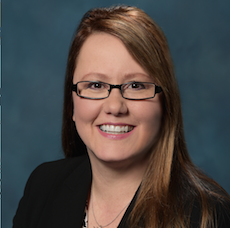
Every year, the calendar moves closer to 2025.
That’s the target by which the National Plan to Address Alzheimer’s Disease hopes that ways to prevent and effectively treat Alzheimer’s disease will have been found. Some treatments may even be available by 2020, little more than two years from now.
The U.S. healthcare system may not be prepared if that happens, however, according to a new study by the RAND Corp.
Specifically, RAND researchers found that more dementia specialists are needed to diagnose early disease and confirm that certain patients are eligible for therapy to prevent disease progression. Other system shortcomings, they said, include a relatively low number of specialized scanning devices and potentially not enough infusion centers to deliver treatments.
As it is, as many as 2.1 million patients who have mild cognitive impairment could develop Alzheimer’s over a two-decade period while waiting for evaluation and treatment resources after approval of an Alzheimer’s disease-modifying therapy by the federal Food and Drug Administration, estimate the researchers.
The authors call for healthcare leaders to begin thinking about how they will respond if a breakthrough occurs. Potential ways they can prepare, the report suggests:
- Train primary care physicians, nurse practitioners and physician assistants to conduct initial screenings for mild cognitive impairment. A shortage of medical specialists such as neurologists, geriatricians and geriatric psychiatrists is the most pressing issue, the authors said.
- Encourage some primary care physicians and specialists such as general psychiatrists to become certified in dementia care so they can provide advanced testing and treatment.
- Use telehealth to increase opportunities for diagnosis by enabling primary care physician access to specialists.
- Establish mobile positron emission tomography, or PET, scanning clinics to reach more patients to confirm brain changes caused by Alzheimer’s.
- Intensify efforts to develop alternatives to PET scans. For instance, current experimental tests that use a person’s cerebrospinal fluid could be refined.
- Prepare to expand clinics, offer infusion in physician offices and consider ways to offer infusion at home (perhaps including senior living communities?). Most of the treatments under development for Alzheimer’s are biologic drugs that would need to be injected or infused, the report authors note.
“Addressing the capacity constraints may turn out to be as challenging as developing an effective treatment for Alzheimer’s,” Soeren Mattke, D.Sc., M.P.H., the study’s senior author and managing director of RAND Health Advisory Services, said in a statement. “But it is important to begin the discussion among stakeholders about how to start addressing the obstacles in a timely manner.”
Surely senior living operators, some of which already care for residents with dementia or could adapt their dialysis model as a way to offer infusions for people with Alzheimer’s, can and should be part of that conversation.
Lois A. Bowers is senior editor of McKnight’s Senior Living. Follow her on Twitter at @Lois_Bowers.



